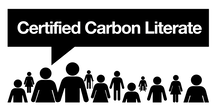Antimicrobial Resistance Library
Antimicrobial Resistance – History and Development
Origins and Evolution of Antibiotic Resistance
This review presents the salient aspects of antibiotic resistance development over the past half-century, with the oft-restated conclusion that it is time to act. PubMed2010. Find out more
This review presents the salient aspects of antibiotic resistance development over the past half-century, with the oft-restated conclusion that it is time to act. PubMed2010. Find out more
The Antibiotic Resistance Crisis
The antibiotic resistance crisis has been attributed to the overuse and misuse of these medications, as well as a lack of new drug development by the pharmaceutical industry due to reduced economic incentives and challenging regulatory requirements.
PubMed 2015. Find out more
The antibiotic resistance crisis has been attributed to the overuse and misuse of these medications, as well as a lack of new drug development by the pharmaceutical industry due to reduced economic incentives and challenging regulatory requirements.
PubMed 2015. Find out more
Antibiotic resistance - World Health Organization (WHO)
Antibiotic resistance is accelerated by the misuse and overuse of antibiotics, as well as poor infection prevention and control. Steps can be taken at all levels of society to reduce the impact and limit the spread of resistance. WHO 2020. Find out more
Antibiotic resistance is accelerated by the misuse and overuse of antibiotics, as well as poor infection prevention and control. Steps can be taken at all levels of society to reduce the impact and limit the spread of resistance. WHO 2020. Find out more
About Antimicrobial Resistance
Antimicrobial resistance is an urgent global public health threat, killing at least 1.27 million people worldwide and associated with nearly 5 million deaths in 2019. CDC 2022. Find out more
Antimicrobial resistance is an urgent global public health threat, killing at least 1.27 million people worldwide and associated with nearly 5 million deaths in 2019. CDC 2022. Find out more
Antibiotic-resistant infections fell in 2020 for first time since 2016, but UKHSA warns drop likely temporary
New UKHSA data shows that bloodstream infections dropped in 2020 for the first time since 2016 but remain at a higher level than 6 years ago,the decline was largely driven by a reduction in recorded bloodstream infections overall, likely due to less social mixing, enhanced hand hygiene and changes to healthcare access and delivery. November 2021. Find out more
New UKHSA data shows that bloodstream infections dropped in 2020 for the first time since 2016 but remain at a higher level than 6 years ago,the decline was largely driven by a reduction in recorded bloodstream infections overall, likely due to less social mixing, enhanced hand hygiene and changes to healthcare access and delivery. November 2021. Find out more
Extended-spectrum beta-lactamases (ESBLs)
Extended-spectrum beta-lactamases (ESBLs): treatment, prevention, surveillance
How to prevent the spread of extended-spectrum beta-lactamase (ESBL) producing E. coli and Klebsiella - and treatment options..
Gov.UK 2013. Find out more
How to prevent the spread of extended-spectrum beta-lactamase (ESBL) producing E. coli and Klebsiella - and treatment options..
Gov.UK 2013. Find out more
EUCAST guidelines for detection of resistance mechanisms Version 1.0 December 2013
The recommended strategy for the detection of ESBLs in Enterobacteriaceae is based on non-susceptibility to indicator oxyiminocephalosporins, followed by phenotypic (and in some cases genotypic) confirmation tests. EUCAST 2013. Find out more
The recommended strategy for the detection of ESBLs in Enterobacteriaceae is based on non-susceptibility to indicator oxyiminocephalosporins, followed by phenotypic (and in some cases genotypic) confirmation tests. EUCAST 2013. Find out more
EUCAST guidelines for detection of resistance mechanisms Version 2.0 July 2017
Cefpodoxime is the most sensitive individual indicator cephalosporin for detection of ESBL production and may be used for screening. However, it is less specific than the combination of cefotaxime (or ceftriaxone) and ceftazidime (13, 14) and only the latter compounds are used in the confirmation testing. EUCAST 2017. Find out more
Cefpodoxime is the most sensitive individual indicator cephalosporin for detection of ESBL production and may be used for screening. However, it is less specific than the combination of cefotaxime (or ceftriaxone) and ceftazidime (13, 14) and only the latter compounds are used in the confirmation testing. EUCAST 2017. Find out more


